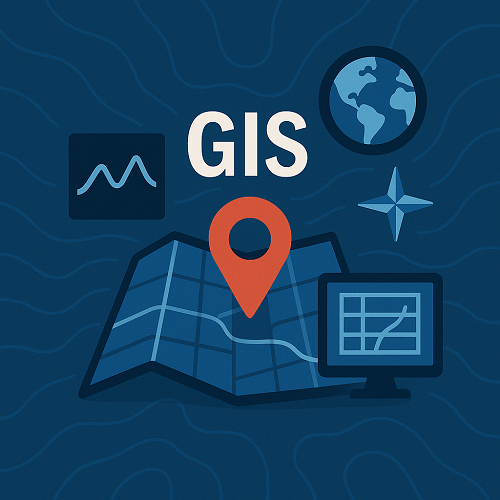TL;DR
- Artificial Intelligence (AI) is transforming GIS workflows, enhancing automated mapping and predictive analytics.
- Internet of Things (IoT) devices now feed continuous, real‑time geospatial data into GIS platforms for urban management.
- Blockchain technology adds verifiable security and data integrity to spatial data transactions.
- Esri’s newest GIS tools combine AI and live data streams to support responsive city infrastructure planning.
- Businesses benefit from faster insights, reduced operational risks, and improved spatial decision‑making accuracy.
What’s New Right Now
In 2025, the world of Geospatial Information Systems is experiencing a convergence of real‑time analytics, Artificial Intelligence (AI), and distributed ledger technologies. Esri recently updated its ArcGIS ecosystem to incorporate machine learning models that automatically classify satellite imagery in seconds. The integration allows public agencies and enterprises to make near‑instant decisions regarding transportation, resource management, and infrastructure resilience. Meanwhile, the use of blockchain frameworks in GIS is enhancing data transparency and immutability, ensuring that spatial data and IoT‑sourced sensor feeds remain tamper‑proof. According to GIS Lounge, the next phase for GIS tools involves tighter coupling with IoT networks and edge computing, making location intelligence more proactive than ever.
Why It Matters
For business leaders, modern GIS empowers faster, data‑backed decisions in operations, logistics, and sustainability planning. Technical stakeholders gain scalable, cloud‑based architectures capable of ingesting vast volumes of streaming spatial data. When integrated with AI, GIS can predict events like traffic congestion or infrastructure deterioration before they occur, leading to cost savings and improved service delivery. Security specialists benefit from blockchain’s ability to track and audit spatial data provenance, a critical factor for smart‑city deployment and disaster response.
The Technology Drivers Behind Modern GIS
Artificial Intelligence in Spatial Analysis
AI models are increasingly used to automate spatial data classification, such as distinguishing land use types, detecting urban growth, or forecasting agricultural yield. Cloud platforms like Esri’s ArcGIS AI toolkit are integrated with open frameworks such as TensorFlow, helping analysts produce results in days instead of weeks.
IoT & Real‑Time Data Streams
IoT sensors installed in smart infrastructure—traffic lights, waste bins, and energy meters—deliver continuous updates that GIS platforms visualize in real time. This connection transforms traditional mapping into a live dashboard that constantly reflects the state of the built environment.
Blockchain for Data Trust and Security
Blockchain ensures that every geospatial update is securely recorded and traceable. This feature matters for legal cadastral systems, environmental compliance, and emergency routing, where accuracy and source integrity are non‑negotiable. Geospatial World reports that pilot projects in land registration are testing blockchain‑enabled GIS layers to eliminate data tampering.
Comparing Emerging GIS Approaches
| Approach | Core Strength | Primary Limitation |
|---|---|---|
| Traditional GIS | Stable analysis of static datasets | Limited responsiveness to live conditions |
| AI‑Enhanced GIS | Automated insights and predictive modeling | Requires high‑quality training data |
| IoT‑Integrated GIS | Real‑time situational awareness | Complex data management and connectivity |
| Blockchain‑Secured GIS | Data transparency and authenticity verification | Higher computational costs |
Mini Case Study: Intelligent Traffic Optimization
Problem
A mid‑size metropolitan area struggled with persistent traffic congestion and lacked timely insight into road conditions.
Approach
The city implemented an AI‑driven GIS solution integrated with IoT traffic sensors and Esri’s real‑time data analytics. Blockchain verification was used to secure and validate incoming traffic flow data streams.
Outcome
Within six months, traffic delays decreased by 18%, and the city’s transport command center reduced manual data processing time by 60%. Predictive alerts allowed dispatch teams to anticipate bottlenecks 20 minutes earlier than before, improving emergency response routing.
Implementation Checklist
- Define your operational or urban planning goals with measurable spatial KPIs.
- Audit existing spatial data sources to ensure accuracy and compatibility.
- Integrate IoT sensors and set up real‑time data ingestion pipelines.
- Train AI models for pattern recognition or predictive analytics specific to your domain.
- Deploy a blockchain layer to secure high‑value or regulated spatial datasets.
- Develop dashboards for monitoring, alerts, and decision support.
- Conduct pilot projects and refine data governance protocols.
- Scale across departments once quality and performance thresholds are met.
Frequently Asked Questions
1. How does AI improve spatial data accuracy?
AI models learn from labeled geospatial datasets, enabling automated error detection and improving classification precision over time.
2. Is blockchain really necessary for GIS?
Not always, but it is valuable when data authenticity and traceability are crucial, such as in land titling or compliance mapping.
3. What are the performance challenges of real‑time GIS?
Processing high‑frequency IoT data requires scalable infrastructure, edge computing, and strong network resilience.
4. Can SMEs afford advanced GIS platforms?
Yes. Cloud‑based subscriptions from Esri and open‑source alternatives like QGIS with AI plugins offer flexible entry points.
5. What skills should analysts develop for 2025 GIS roles?
GIS analysts should blend spatial analytics with machine learning, Python scripting, and cloud infrastructure familiarity.
6. How soon can a city see ROI from AI‑GIS deployments?
Typically within 6–12 months, depending on data readiness, implementation scale, and integration with urban management systems.
Conclusion
As we move deeper into 2025, GIS technology stands at the intersection of automation, connectivity, and trust. AI and IoT make geospatial systems more responsive, while blockchain secures the foundation of spatial truth. Organizations that embrace these integrations will gain unprecedented situational awareness and resilience. To explore practical solutions tailored to your data challenges, explore our GIS services.
